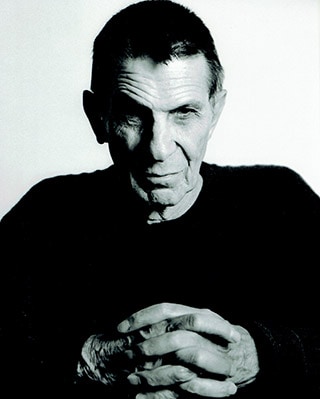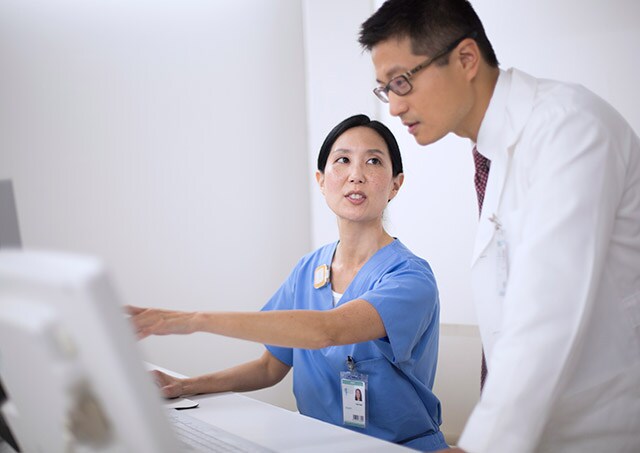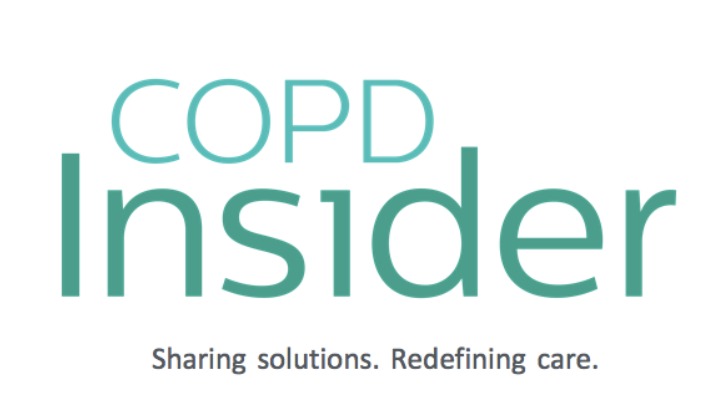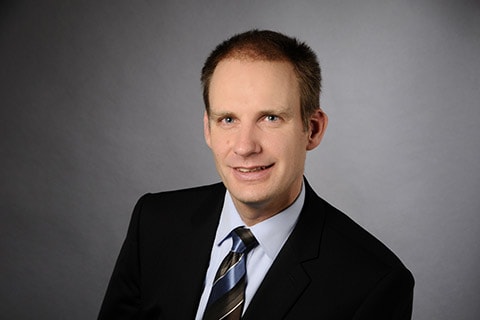September/October 2016
Featured article
Philips Respironics’ Marc Krueger emphasizes clinical collaboration in new role
For Marc Krueger, open communication channels between clinicians and companies have been the building blocks for understanding challenges and developing solutions in today’s sleep and respiratory environment.
As the new leader of Philips Home Care in Germany, Austria and Switzerland, Marc Krueger shares how he plans to keep Philips connected with sleep and respiratory experts, especially as reimbursement, technology and culture continue to influence business operations.
Where is the respiratory business headed in the future?
Marc Krueger: Chronic Obstructive Pulmonary Disease (COPD) will continue to be a major health concern, making management of the disease a priority for both physicians and respiratory innovators, like Philips. Our focus will be to improve options for symptom management. This includes clinical support and new technologies to help enable patients to take more control of their health and encourage adherence to prescribed treatments. Our ultimate goal is to help keep COPD patients out of the hospital – not only can prevention be healthier, but also less costly.
What experiences from your previous roles at Philips Respironics helped you prepare for your new role in leading the Home Care business in Germany, Austria and Switzerland?
Marc Krueger: Collaboration with the clinical community has always been my focus. More than 10 years ago, I developed the Central Eastern European Sleep Expert Group, a stakeholder event attended by clinical experts and solutions provider professionals to develop best practices for patients and providers in sleep medicine. The goal was to merge medical treatment with organizational efficiencies. I’ve also played a large role in creating the only sleep conference in the Middle East, the Gulf Sleep Meeting. In organizing these events, I’ve learned how to facilitate important discussions and manage complex situations among clinicians and providers while taking into consideration a variety of cultural, personal and professional opinions. It is paramount that all stakeholders can walk away from the experience feeling their voice has been heard.
What are some challenges in the market that you’ve identified in your new role?
Marc Krueger: The major challenge for the healthcare market segment is reimbursement. Hospitals and Durable Medical Equipment (DME) companies are under pressure to reduce readmissions while receiving less reimbursement for diagnostic and therapeutic treatments. It’s a challenge to provide the best quality of care service and at the level that patients expect with reduced reimbursement. As a part of the healthcare industry, we must work together creatively to balance the needs of patients, advance quality care, while maintaining a profitable business model.
The incorporation of technology has become a huge focus in sleep over the past several years. What about this is most exciting to you?
Marc Krueger: Innovation has to serve people, and for me the most exciting piece is the technology that enables our customers to better treat their patients. From my view, when patients become more engaged in their therapy, they will be more compliant and satisfied with their treatment plan.
What is the best way for clinicians to share information with you?
Marc Krueger: I can always be reached by phone or email. However, I still believe that face-to-face meetings hold value. I love the opportunity at medical conferences, and meetings to meet as many people as possible, in person.
What opportunities have you identified that might improve communications between companies and the research/clinical community?
Marc Krueger: Listening and understanding each other’s needs is most important. In my experience, when leading open discussions, it is key to first identify the core values of the patient and the health care system for successful collaboration.
What changes are you making to help better meet the needs of your customers?
Marc Krueger: I am building an organizational structure which is clear, transparent and easy to understand for our customers and my team. I have been traveling with my sales team, to meet with physicians, RTs and distribution partners to better understand their needs. My team and I are learning a great deal from our customers.

Film honors the late Star Trek actor's life, career and struggle with COPD Philips is raising awareness for chronic obstructive pulmonary disease by sponsoring the documentary COPD: Highly Illogical - Remembering Leonard Nimoy. The documentary seeks to educate viewers about COPD through Leonard Nimoy's personal story of courage, while also providing the latest information about treatments for the chronic disease. Philips’ support for the documentary comes as more than 384 million individuals1 living with COPD worldwide and COPD advocates everywhere honor the lives touched by this disease during World COPD Day on Nov. 16.
"COPD claims millions of lives every year, yet it doesn't have nearly as much visibility as it should for how difficult it makes the lives of patients and their families. Our aim in sponsoring this film is to raise awareness of the disease and its consequences if left undiagnosed or untreated," said Eli Diacopoulos, Philips Home Respiratory Care Business Leader. "By sponsoring this film, we hope to spark conversations about improving COPD detection, prevention and treatment, and empower people with facts to educate others about a disease that has profoundly impacted many lives, like Leonard Nimoy's."

Produced by Nimoy's daughter, Julie Nimoy, and her husband, David Knight of Health Point Productions, COPD: Highly Illogical reveals the last few months of the famed actor's life, which was claimed by the disease in February of last year. Nimoy's COPD stemmed from both his smoking addiction and the fact that his decade-long struggle with the disease wasn't officially diagnosed until 2013, when it was past the point of effective treatment. "Movie enthusiasts and science fiction fans alike were captivated by my father, Leonard Nimoy, in his role as Mr. Spock in Star Trek," said Julie Nimoy. "His character's iconic catchphrase, 'Live long and prosper,' quickly echoed through generations and became a battle cry for fans. I look forward to continuing my dad's mission of raising awareness and helping COPD patients like him to live longer and prosper in their own lives, as my dad did in his." For more than 25 years, Philips has been shaping the future of care for those with COPD. Offering people-centric innovations designed to empower patients to live full and active lives with COPD, Philips is making what was once science fiction, a reality. Among Philips' recent innovations in respiratory care is the SimplyGo Mini portable oxygen concentrator, one of the smallest and lightest POCs on the market, as well as Care Orchestrator, a healthcare management application enabling enhanced connectivity and care for patients in the home. 1Adeloye, Davies et al. “Global and Regional Estimates of COPD Prevalence: Systematic Review and Meta–Analysis.” Journal of Global Health, Edinburgh University Global Health Society, Dec. 2015, http://www.ncbi.nlm.nih.gov/pmc/articles/pmc4693508/ .
Philips showcased its latest COPD and respiratory solutions at the European Respiratory Society International Congress (ERS) in September.
To learn more about the documentary and view the trailer, please visit http://copdllap.com/

Chronic Obstructive Pulmonary Disease (COPD), is a preventable chronic illness but one of the most common under-diagnosed, deadly, and costly diseases to manage. COPD affects an estimated 384 million individuals worldwide, with numbers increasing every year.1 COPD is the third leading cause of mortality worldwide, and is responsible for more than 3 million deaths annually with about two-thirds of adult cases undiagnosed. 2
In the U.S., 120,000 people die from COPD each year – that’s more than deaths from breast, colorectal and prostate cancers combined.3
Researchers have found that more women die from COPD than men each year. 3 Costs of treatment for patients with COPD was nearly $50 billion yearly in the U.S. (direct and indirect) in 2010, and over 38 billion Euros in the European Union in 2005.4 Excessive cigarette smoking is a major cause of COPD. About 5.8 trillion cigarettes are smoked each year worldwide.5 Placed end-to-end, these cigarettes would form a single line that reaches from earth to beyond the sun. Beyond cigarettes, biomass, including wood, crop residues and animal dung are used to as energy sources for 50 percent of cooking and heating needs in the world.6 Exposure to the smoke and air pollution resulting from burning biomass combustion is also increasingly recognized as an important cause of COPD. However, these exposures can be significantly reduced with behavioral change and advances in technology. One way to prevent or treat COPD at its earliest stages is to stay alert about respiratory disturbances; symptoms should not be ignored, diagnosis should not be missed, and therapy must not be delayed. At Philips, we realize that encouraging healthy habits is as important as treating unhealthy disorders. We understand the importance of enhancing self-empowerment and self-management in health by innovations in the sciences. We are committed to creating technology and services that are effective for individuals with COPD and other respiratory diseases. 1Adeloye, Davies et al. “Global and Regional Estimates of COPD Prevalence: Systematic Review and Meta–Analysis.” Journal of Global Health, Edinburgh University Global Health Society, Dec. 2015, http://www.ncbi.nlm.nih.gov/pmc/articles/pmc4693508/ . 2“The Top 10 Causes of Death.” World Health Organization, World Health Organization, http://www.who.int/mediacentre/factsheets/fs310/en/ . 3“NIH Fact Sheets - Chronic Obstructive Pulmonary Disease (COPD).” U.S National Library of Medicine, U.S. National Library of Medicine, https://report.nih.gov/nihfactsheets/viewfactsheet.aspx?csid=77 . 4Jalota, Leena, and Vipul V Jain. “Action Plans for COPD: Strategies to Manage Exacerbations and Improve Outcomes.” International Journal of Chronic Obstructive Pulmonary Disease, Dove Medical Press, 2016, http://www.ncbi.nlm.nih.gov/pmc/articles/pmc4898028/ 5“Cigarette Consumption” The Tobacco Atlas, http://www.tobaccoatlas.org/topic/cigarette-use-globally/#map-popup-consumption-4 . 6“Risk of COPD from Exposure to Biomass Smoke: A Metaanalysis” Medscape, http://www.medscape.com/viewarticle/726573 .

Activity One: Optimizing Discharge Planning Following Hospitalizations in Patient with COPD with Gerard Criner, MD, Michael Dreher, MD, and Carolyn D’Ambrosio, MD.
Activity One: Sleep Apnea and Cardiovascular Disease with Virend Somers, MD, PhD.


Additional sleep and respiratory educational courses, programs and solutions are available within the Philips Learning Connection, including CHEST and European Medical Journal (EMJ) educational events and resources sponsored by SRC. Click here to be redirected to the Philips Learning Connection site in order to access these educational programs.

The COPD insider is assembling experts in value-based COPD care to debate the biggest issues and share practical solutions. It’s connecting the entire care team and empowering them to transform possibilities from the hospital to the home. Register today to be part of the new thinking in COPD.
Register here

SAVE Trial shows CPAP treatment improves wellbeing but is without cardiovascular benefit in patients with prior diagnosis of coronary artery disease (CAD) or cerebrovascular disease (CVD) and OSA.
Philips issued the following statement about the SAVE trial on Sept. 1, 2016. For additional background, investigation highlights and detailed trial results, please visit http://www.savetrial.org/ There are many pieces to the complex puzzle describing the relationship between sleep apnea and coronary artery disease / cerebrovascular disease and these data represent but one. It is important to determine the factors that might account for the differences in outcomes in this study from a number of previous studies that did find improved outcomes with sleep apnea therapy. These likely include research methodology, subject selection, demographics and comorbidity, treatment adherence, and others. The SAVE researchers are also working on secondary analyses of the data and this might provide additional insights into the effects of CPAP treatment on stroke and other cardiovascular outcomes. The SAVE study indicates that clinicians may continue to use CPAP therapy in patients with OSA and cardiovascular/cerebrovascular disorders so as to help improve symptoms of sleepiness, mood, work productivity, and quality of life. The SAVE trial builds on Philips’ commitment to innovation and clinical advancement. With Philips celebrating its 100 years of research, the global clinical research team will continue its efforts to support clinical trials and research that advance global health. A comprehensive overview of the SAVE trial was recently published by Gerard J. Meskill, MD on Huffington Post.com. Click here to see the article.
Andover, MA. – Royal Philips (NYSE: PHG, AEX: PHIA), Philips Respironics would like to recognize and congratulate Dr. Doug McEvoy and his team of investigators on their completion of the largest properly powered Randomized Controlled Trial (RCT) looking at the treatment effects of Continuous Positive Airway Pressure (CPAP) on Cardiovascular Disease (CVD). The results of this study, the Sleep Apnea cardioVascular Endpoints (SAVE)1, were published in The New England Journal of Medicine2 and presented at ESC (European Society of Cardiology) conference on August 28, 2016. Philips was the lead sponsor of the SAVE trial.
Connect with Philips Sleep and Respiratory Care at the GOLD COPD Care Continuum Meeting
Philips attended American College of Chest Physicians (CHEST) Annual Meeting
Thank you for stopping by our booth at the American College of Chest Physicians (CHEST) Annual Meeting in Los Angeles, California.
Philips Sleep and Respiratory Care attended the American Association for Respiratory Care Congress
Philips attended the American Association for Respiratory Care (AARC) congress in San Antonio, Texas, on October 15-18. At the booth, industry subject matter experts hosted forum talks about sleep and respiratory care throughout the day.

